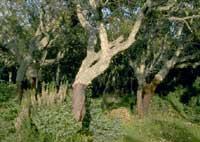Synthetic corks damage cork oaks
Lately the cork oaks are worse than before, especially because the peasants leave the forests to go to the city. In addition, agriculture and livestock are increasingly widespread in cork oaks, while cork extraction is becoming smaller.

According to the environmental group WWF/Adena, the use of synthetic corks is harmful to cork oaks. For the conservation of these forests, it proposes to consumers the purchase of bottles with natural cork, thus favoring the cork industry and avoiding the exploitation of cork oaks.
Cork oaks are very rich. They are the habitat of endangered species such as the solar eagle or the Iberian lynx. According to WWF/Adena, the disappearance of cornocales can be a death sentence for these species and would be detrimental to many others.
Buletina
Bidali zure helbide elektronikoa eta jaso asteroko buletina zure sarrera-ontzian











